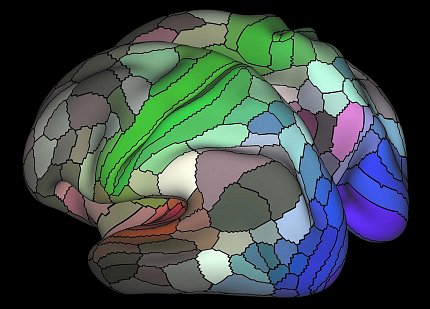Connectome Map More Than Doubles Human Cortex’s Known Regions

Photo: Matthew Glasser, David Van Essen
Researchers have mapped 180 distinct areas in our brain’s outer mantle, or cortex—more than twice the number previously known. They have also developed software that automatically detects the “fingerprint” of each of these areas in an individual’s brain scans. Funded by NIH through its Human Connectome Project, this software correctly mapped the areas by incorporating data from multiple non-invasive brain imaging measures that corroborated each other.
“These new insights and tools should help to explain how our cortex evolved and the roles of its specialized areas in health and disease and could eventually hold promise for unprecedented precision in brain surgery and clinical work-ups,” said Dr. Bruce Cuthbert, acting director of the National Institute of Mental Health, which co-funded the research as part of the HCP.
The new study identified—with a nearly 97 percent detection rate—97 new cortex areas per hemisphere, in addition to confirming 83 that were previously known.
NIMH grantees Dr. David Van Essen and Dr. Matthew Glasser, both of Washington University in St. Louis, and colleagues at six other research centers, reported on their discoveries July 20 in the journal Nature.
